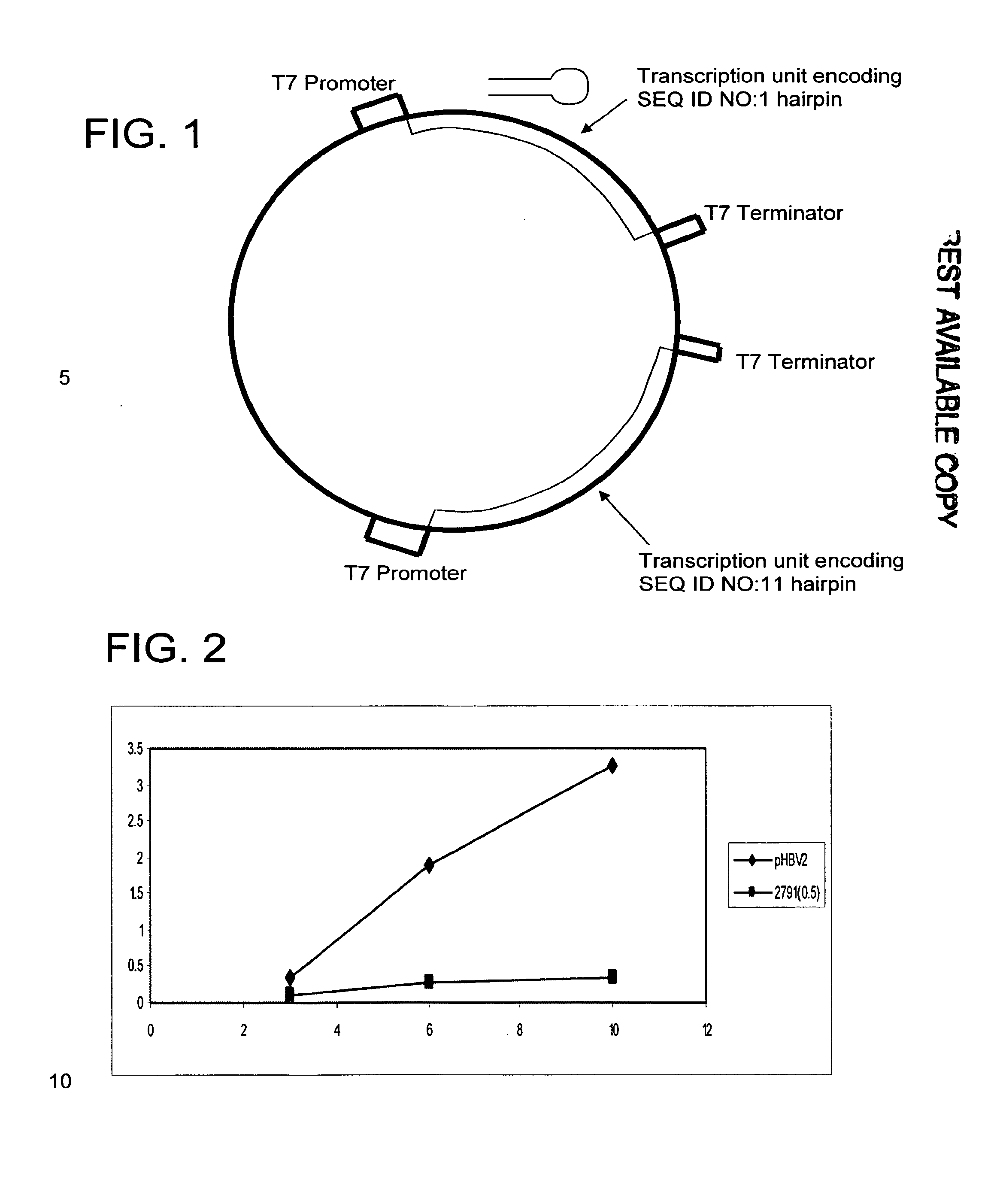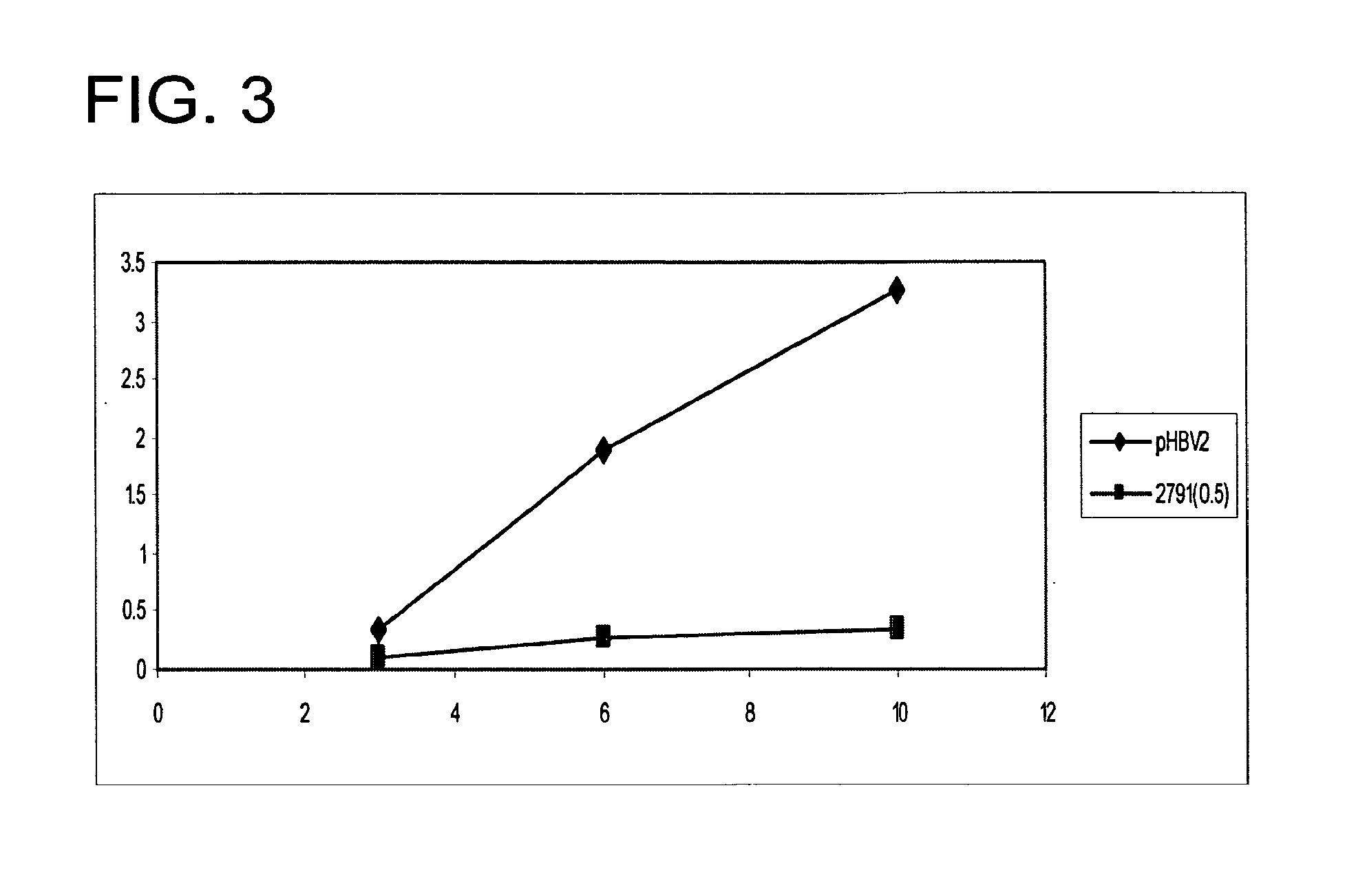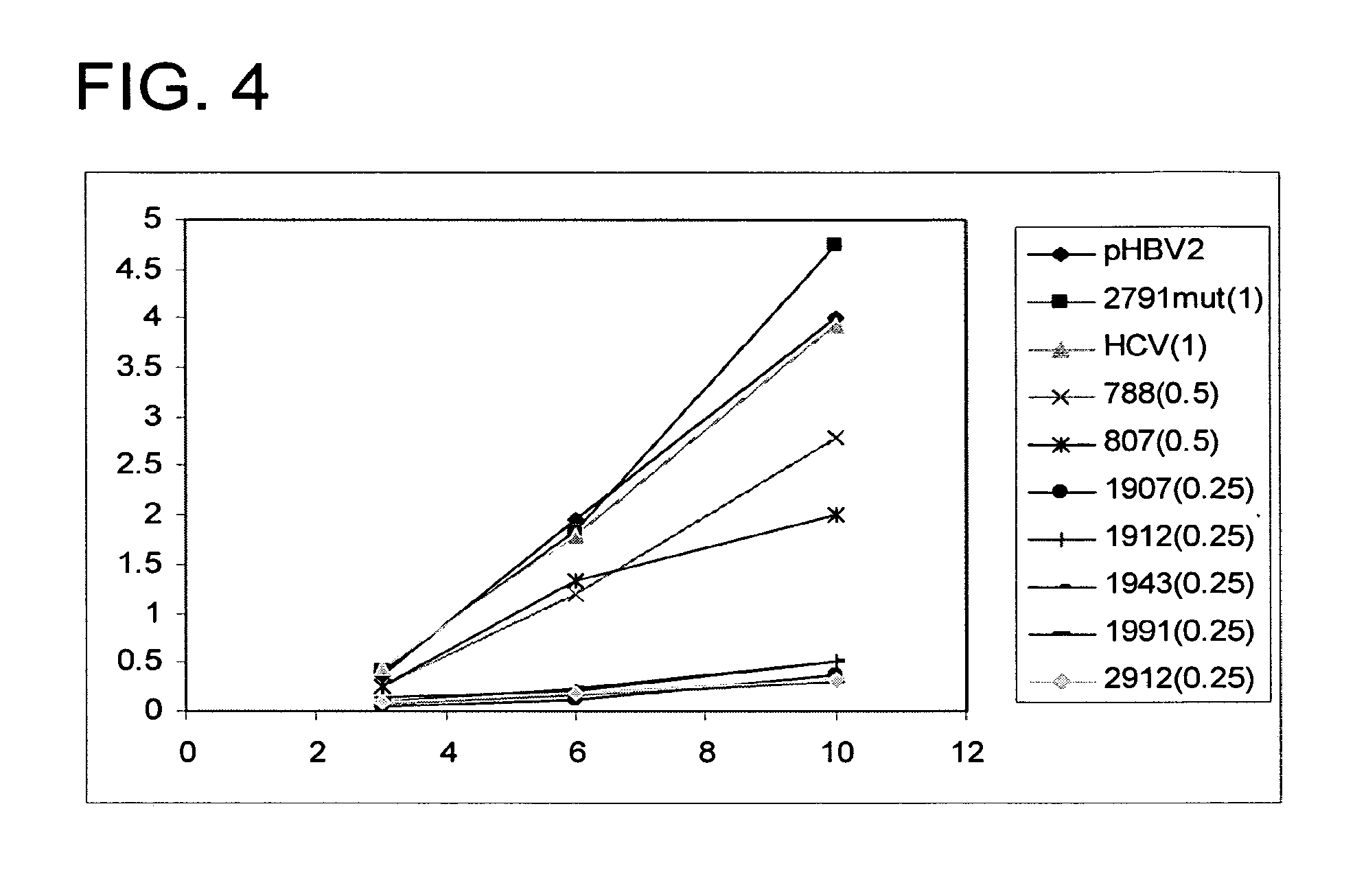Conserved hbv and hcv sequences useful for gene silencing
a technology applied in the field of conserved hbv and hcv sequences useful for gene silencing, can solve the problems of insufficient vaccine against hcv, insufficient drug therapy, and inability to fully eliminate hbv, etc., and achieve the effect of inhibiting expression
- Summary
- Abstract
- Description
- Claims
- Application Information
AI Technical Summary
Benefits of technology
Problems solved by technology
Method used
Image
Examples
example 1
Silencing HBV Replication and Expression in a Replication Competent Cell Culture Model
[0167]Brief description of cell culture model: A human liver-derived cell line such as the Huh7 cell line is transfected with an infectious molecular clone of HBV consisting of a terminally redundant viral genome that is capable of transcribing all of the viral RNAs and producing infectious virus [1-3]. The replicon used in these studies is derived from the virus sequence found in Gen Bank Accession V01460. Following internalization into hepatocytes and nuclear localization, transcription of the infectious HBV plasmid from several viral promoters has been shown to initiate a cascade of events that mirror HBV replication. These events include translation of transcribed viral mRNAs, packaging of transcribed pregenomic RNA into core particles, reverse transcription of pregenomic RNA, and assembly and secretion of virions and HBsAg (Hepatitis B Surface Antigen) particles into the media of transfected c...
example 2
Hepatitis C-Sequences for RNAi Therapeutic Development
Experiment 1
Brief Introduction:
[0193]The hepatitis C virus (HCV) is the primary cause of non-A, non-B transfusion-associated hepatitis and accounts for more than 200 million hepatitis cases worldwide. The HCV genome has a high degree of sequence variability. There are six major genotypes comprising more than fifty subtypes and significant heterogeneity hallmarked by quasi-species has been found within patients. Great progress in understanding HCV replication has been made by using recombinant polymerases or cell-based subgenomic replicon systems. By using a replicon cell system, HCV-specific siRNA has been demonstrated to be able to suppress HCV protein expression and RNA replication. Sequences of the 5′ NTR and both structural and nonstructural genes have been targeted successfully. The highly conserved nature of the 3′ NTR sequence makes it a highly attractive target for siRNA based therapy. However, no study has been done to e...
example 3
Silencing HBV Replication and Expression in a Replication Competent Cell Culture Model
Brief Description of Cell Culture Model:
[0206]A human liver derived cell line such as the Huh7 cell line is transfected with an infectious molecular clone of HBV consisting of a terminally redundant viral genome that is capable of transcribing all of the viral RNAs and producing infectious virus [1-3]. The replicon used in these studies is derived from the virus sequence found in Gen Bank Accession #s V01460 and J02203. Following internalization into hepatocytes and nuclear localization, transcription of the infectious HBV plasmid from several viral promoters has been shown to initiate a cascade of events that mirrors HBV replication. These events include translation of transcribed viral mRNAs, packaging of transcribed pregenomic RNA into core particles, reverse transcription of pregenomic RNA, and assembly and secretion of virions and HBsAg (Hepatitis B Surface Antigen) particles into the media of...
PUM
| Property | Measurement | Unit |
|---|---|---|
| diameter | aaaaa | aaaaa |
| volumes | aaaaa | aaaaa |
| volumes | aaaaa | aaaaa |
Abstract
Description
Claims
Application Information
 Login to View More
Login to View More - R&D
- Intellectual Property
- Life Sciences
- Materials
- Tech Scout
- Unparalleled Data Quality
- Higher Quality Content
- 60% Fewer Hallucinations
Browse by: Latest US Patents, China's latest patents, Technical Efficacy Thesaurus, Application Domain, Technology Topic, Popular Technical Reports.
© 2025 PatSnap. All rights reserved.Legal|Privacy policy|Modern Slavery Act Transparency Statement|Sitemap|About US| Contact US: help@patsnap.com



